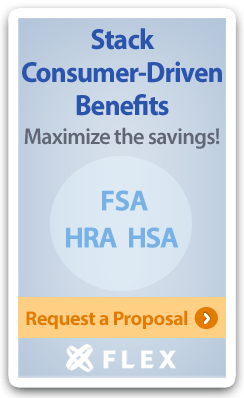Benefits Buzz
Financial Wellness in the Workplace

For employees, achieving financial wellness is a journey…and the workplace can be the starting point
Financial wellness can be many things to many employees. Generally, it is the state of being in strong financial health so that an individual can successfully manage day-to-day finances, be prepared for unexpected financial shocks and save for the future. This can mean saving for college, successfully managing a budget or being able to enjoy an annual family vacation. It’s really about reducing the stress employees feel about their personal financial situations.
Why is this important to employers?
Financial wellness is critical to an employee’s overall wellbeing. And a growing body of evidence supports the fact that employees are stressed about their finances and are looking to their employers for help.
-
53% of employees are worried about their future because of their financial situation (1)
-
52% of employees report living paycheck to paycheck (1)
-
50% of employees say that employers have a responsibility for the financial well-being of their employees (1)
Financial worries significantly surpass job stress (17%), relationships (15%) and health concerns (14%). (2)
Providing a financial wellness solution is becoming a business imperative for employers.
An effective workplace financial wellness program can help employers:
-
Boost employee understanding and engagement in their benefits;
-
Reduce workers’ financial stress which should help to reduce absenteeism/presenteeism, increase productivity, drive loyalty and reduce turnover; and,
- Facilitate smooth transitions for retiring workers.
Employers can use four key steps for the development, implementation and ongoing management of a successful workplace financial wellness program:
Step One: Decipher employees’ financial anxiety
Take workers’ financial wellness “temperature.”
-
Assess employees’ financial priorities and preparedness
-
Use insights to define financial needs by demographic segment and life stage
-
Determine the impact of employees’ fiscal health on the company’s culture and bottom line (e.g., productivity, presenteeism/absenteeism, health care costs, wage garnishments, etc.)
- Establish insights-driven objectives for the program
Step Two: Tailor the program
Customize a financial wellness program based on employees’ short- and long-term needs.
-
Take a holistic approach that includes the four core principles of financial wellness:
-
Financial Awareness – Use customized communication and multi-channel education to give employees a better understanding of their personal financial situations
-
Financial Health – Provide tools to help employees manage day-to-day finances and unplanned expenses (e.g., budgeting tools, cash management applications)
-
Financial Security – Enable employees to plan for future life milestones (e.g., college and retirement savings)
-
Financial Inclusion – Provide access to financial and protection solutions, including employer- sponsored benefits, for all employees at any level
-
Financial Awareness – Use customized communication and multi-channel education to give employees a better understanding of their personal financial situations
- Integrate seamlessly with existing employee benefits to facilitate access, provide an individualized experience, and assure employees that their employer has confidence in the program
Step Three: Drive engagement and participation
Engage employees and encourage frequent interaction in order to drive long-term behavioral change.
-
Develop solutions that help determine whether employees are making behavioral changes toward financial wellness, and keep them focused and on track with their goals
-
Offer access to delivery channels ranging from high touch (e.g., on-site workshops, webinars, personal consultations) to high tech (e.g., calculators, online assessment tools and curated content)
-
Keep communication clear and actionable by providing relevant content and resources
- Optimize employee engagement during open enrollment by providing content that helps employees see the connection between their employee benefits and their financial wellness needs
Step 4: Measure the value
Use Value of Investment (VOI) to evaluate and improve your program.
-
Develop a benchmark against which the program can be measured by assessing current financial wellness initiatives
-
Determine clear goals and business outcomes that you hope to achieve through a financial wellness program
- Use VOI to quantify the program’s success by taking into account intangibles such as higher employee morale, improved productivity and reduced employee absences for deeper insights into the impact of workforce financial wellness on business outcomes
Whether they're millennials, pre-retirees or somewhere in between, financial wellness programs help employees bridge their financial needs for today and tomorrow, plan for the unexpected, and maximize the value of benefits.
Looking to help your clients establish financial wellness programs for their employees?
Contact a Flex Representative to learn more.
(1) MetLife’s 16th Annual U.S. Employee Benefit Trends Study, www.metlife.com/ebts2018, April 2018.
(2) PwC Employee Financial Wellness Survey: 2017 Results, www.pwc.com/us/en/private-company-services/publications/assets/pwc-2017-employee-wellness-survey.pdf, PricewaterhouseCoopers, April 2017

